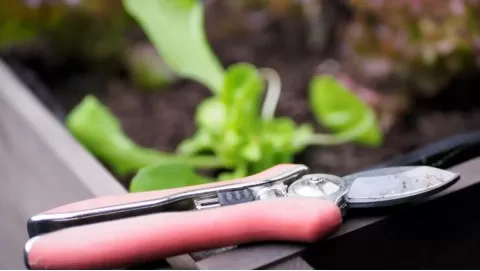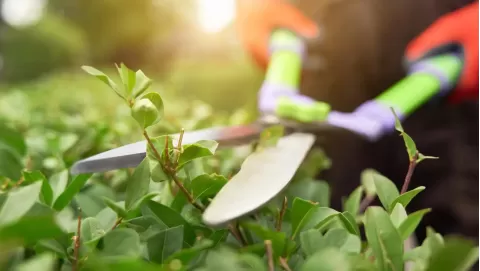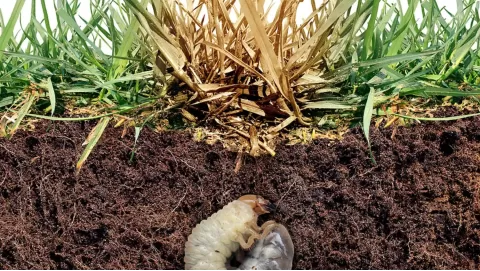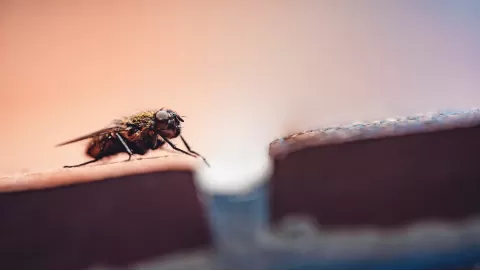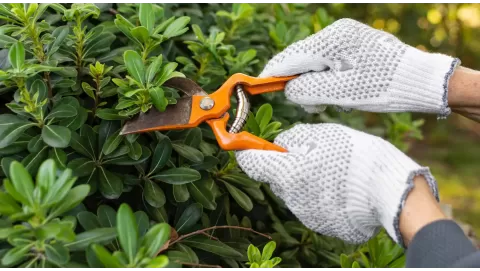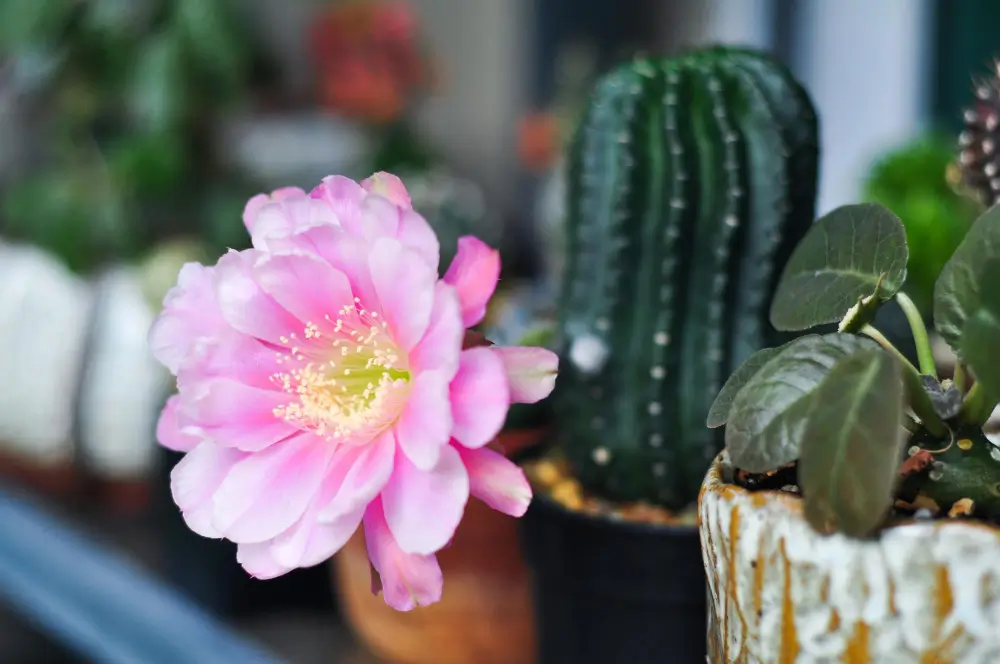
Christmas Cactus care: How to encourage festive blooms
During the winter holidays, festive and jubilant decorations with twinkling lights make for a warm and inviting setting for family and friends gatherings. Houseplants can provide warmth and life to winter gatherings. They are not only decorative, but they also increase human well-being and the healthy environment indoors.
For an indoor plant lover, the Christmas cactus, or Schlumbergera, is the way to go. This plant offers more than beauty, too—it flourishes in winter and brings new life to any room with its vibrant colors. The Christmas Cactus represents strength and a fighter. This plant is a living memory in many homes and is often passed down from one generation to another.
This is a vibrant and colorful plant with bright flowers to add happiness and color to any room during the holidays. Christmas Cactus are indoor plants, but they can be kept indoors year long, not just in the gross, cold winter. If you like indoor plants but don't feel inspired to take care of them, you can have it to your collection. They also purify the air, help to stave away stress and make a space more tranquil. It’s a great plant because it lives so long and is so adaptable.
Its segmented, flat stems and vibrant, tubular flowers distinguish it as a cactus. The Christmas Cactus is a visual treat representing resilience and grace. With a little love and attention to detail, an indoor planted Christmas cactus will thrive for weeks.
The Growcycle has all the essential tools and supplies needed for the growth of vibrant, healthy, and beautiful indoor lush plants needed for plant enthusiasts. They have a reputation for quality garden care products that prosper. Whether or not one is a pro or just about to kick off an indoor garden, Growcycle has a product designed specifically for them. They raise each plant to be a healthy and happy specimen bringing joy to any space.
History and Origin
Schlumbergera Bridgesii is the scientific name for the Christmas Cactus. The name Schlumbergera honors the French cactus collector Frédéric Schlumberger. The Christmas Cactus is actually a member of this genus of cactus. This plant is everyone’s favorite and hails from the rainforests of Southeast Brazil. The Christmas Cactus nourishes itself from the air and endogenous substances. This allows it to thrive without requiring much soil or light.
Its transformation into a treasured houseplant took place in the 19th century. It was brought back from Brazil by European collectors. The plant has been hybridized over the years to provide many colors. It has since become a staple of holiday decor and a beloved gift.
Botany of the Christmas Cactus
This plant has long, flat green segments that resemble leaves, but are really stems. These are structures for photosynthesis. They may grow up to 3 inches long and have sawtooth edges. The segments form a cascading effect, so that the plant looks like it is hanging in a graceful manner.
One of the most spectacular things about this cactus is its flowers. They flower from the tops of the greenery. The colorful blooms with their bright pink, deep red, and pure white colors can brighten up any room. Occasionally, an individual plant has a combination of these colors. The flowers are long and tubular with several layers of petals.
Its texture is smooth as well to the plant. Its segments have a small amount of waxiness, which helps it retain moisture. This makes it look glossy, particularly under light. Christmas Cactus can be in many sizes. All these can grow up to 24 inches tall and wide, though mature sizes can be controlled by pruning. This little plant makes a handsome accent indoors in all sorts of homes, from big houses to little apartments.
Types of Christmas Cactus
Here are just a few varieties of this plant:
- Schlumbergera Truncata (Thanksgiving Cactus)
Mistaken for the Christmas Cactus, the Thanksgiving Cactus (Schlumbergera truncate) bloomed in late November, a few days before Thanksgiving. Its leaves are serrated and pointed, like small claws. Flowers If flowers are present, they are usually orange, pink, red or white. For a cactus that blooms earlier in the holiday season, opt for the Thanksgiving Cactus. It’s also great for those who are drawn to its peculiar, claw-shaped leaves.
- Schlumbergera x Buckleyi (True Christmas Cactus)
The True Christmas Cactus also does well at Christmas. It's the ideal holiday plant. Its leaflets are rounder and smoother than the Thanksgiving Cactus. The flowers are typically purple, hot pink or pink. For a plant that is in flower at Christmas the True Christmas Cactus could be described as perfect. Its glossy rounded leaves and time-honored holiday bloom time make it a classic pick.
- Schlumbergera Gaertneri (Easter Cactus)
The Easter Cactus stands out and blooms in the spring, typically around Easter. It has rounded, bristle-edged leaves, and produces star-shaped flowers, pink, red, and white. If it’s a cactus that keeps the holidays going into spring that they want, try an Easter Cactus. Its daisy-like flowers are a welcome burst of freshness after winter.
Essential Features of Christmas Cactus
The Christmas Cactus is loved for its unique blooming flowers. Here are some of its most notable features:
Low Maintenance
This is an easy-to-care-for plant and has low maintenance. It is drought-tolerant and performs well in part sun to shady sun. It’s a great option for novice and veteran gardeners alike. It's also quite hardy and adaptable, which is why it's an excellent houseplant.
Air-Purifying Qualities
As with most indoor plants, the Christmas Cactus will purify the air in your home. It is conducive to improving the home environment and makes your home clean, while the planter can bring you clean air by absorbing carbon dioxide and releasing oxygen.
Non-Toxic in Natures
The Christmas Cactus is non-toxic to pets and children. It’s non-toxic! So your pets will not be hurt. This is important for anyone who seeks to appreciate plants without fearing their dangers.
Propagation Ease
One of the Christmas Cactus's most attractive attributes is the simple fact that it's easy to propagate. One segment can be rooted into a new plant, and then you can give away the original one, or you can just keep them both if you want to expand your collection.
Essential Care Tips to Encourage Festive Blooms
The following are important points to consider in growing Christmas Cactus indoors:
Soil
Selecting a suitable soil for the Christmas Cactus is crucial. It assures its health as well as colorful blossoms. This plant thrives in soil that is well-draining. This should resemble its natural environment, ie, tree fissures in tropical forests. A combination of cactus or succulent soil and potting mix works nicely, offering good drainage and moisture retention.
Sand or perlite in the mix may also assist. Preventing roots from sitting in water promotes aeration and prevents rot. The right kind of soil will give the Christmas Cactus the environment it needs to bloom wonderfully.
Lighting
Good light is important for the Christmas Cactus to grow well. Unlike other desert cacti, the Christmas Cactus prefers bright, indirect sunlight to direct sunlight. It grows well in its habitat, filtered light under a tree cover.
Put the plant by a north or east window for the same effect. It requires lots of natural light, but not harsh direct sun. Too much sun can burn the leaves, and too little can prevent flowers from blooming the next year. But give it the right light and the Christmas Cactus will flourish.
Water
Well-watered Christmas Cactus is key to their health. This plant loves water, but not overwatering. Do not water until the top inch of soil feels completely dry to the touch, then water the Christmas Cactus aggressively, allowing excess water to run out of the container.
When plants flower during the spring and summer, water consistently is best. Cut back on watering in fall and winter to encourage healthy growth. It is important to keep the plant out of the water because standing water can lead to root rot. Check the soil moisture. Modify the watering schedule to maintain your Christmas Cactus's health and appearance.
Humidity Level
Christmas Cactus prefers a little humidity. When the home is dry, increase humidity, particularly in the winter. People can use a humidifier or set out a water tray near the plant. Mist the plant every so often for extra moisture, but don’t let the soil get super wet.
FertilizerUse a half-strength diluted and well balanced fertilizer. Fertilize the plant once a month during the spring and summer growing seasons. Cut back on fertilizer in late fall and winter or cease it entirely to promote flowering.
Trim and Repot
Prune the plant by cutting a few inches off the top of each stem after the bloom period. This encourages branching, and the plant becomes larger. Re-pot the Christmas Cactus every 2-3 years in spring if possible. Plant owners will need to use fresh soil if plants grow over time, and a slightly larger pot for the increased plant size.
Container Type for the Growth of Plant
The size of the container that the user selects will also have an effect on how the Christmas Cactus grows. Here are a few plant containers in which these plants are happy to grow:
Plastic Containers
Plastic shelves are light and keep water better than any other. A Christmas Cactus requires less water. It also helps if plant owners have a predilection for overwatering their indoor plants.
Terracotta Containers
Because terracotta pots are porous, air easily passes in and out. This is particularly good for a Christmas Cactus, as it avoids root rot and waterlogging.
Ceramic Containers
Ceramics offers nice décor options, in well-shaped, colorful, and sometimes glazed pots. Their insulation of the soil helps maintain a more consistent temperature. But they can also trap in moisture like other plastic containers, just not as well.
Metal Containers
Metal pots would be less common, but can be competent for Christmas Cacti given the right drainage. Metal pots heat up fast and will quickly heat up plant soil, so there is a tendency that would result in early parching for your plant soil that needs to be watered often. But steer clear of high and low temperatures and direct sunlight, which stresses the cactus out.
Benefits of Christmas Cactus
Here are the advantages that everyone can get when you have this particular plant inside your home:
Year Round Beauty
Christmas Cactus blooms in winter. It provides color in homes when plants are dormant and lifeless. Its vibrant, trumpet-like red, pink, or white flowers can last weeks, providing a cheerful decoration for homes around the holidays.
Unique Aesthetic Appeal
The Christmas Cactus has a distinctive appearance. It has leaf-like, segmented stems and colorful, tubular flowers. Its unusual form and flower blossoms make it a unique plant. It will be the prize of any collection.
Mental Health
Caring for a Christmas Cactus can be good for mental health. Looking after a plant and seeing it thrive can be soothing and help people to relax, reducing levels of stress and increasing productivity.
Healthy Environment
A Christmas Cactus at home limits green areas, which is good for the environment. Plants raise humidity, clean the air, and improve aesthetics, enhancing the indoor environment.
Holiday Gift
The Christmas Cactus plant is an original and festive gift to give for the holiday season. Its lovely flowers and easy care requirements make it ideal for friends or family. They will either love indoor gardening or need some green in their lives.
Tricks for Thriving Christmas Cactus
Here are a few must-know hacks for flourishing Christmas cactus.
Pruning
Cutting back the Christmas Cactus after it has bloomed will encourage bushier growth and more blooms. Pinch out the tips of the stems or any damaged areas to stimulate regrowth.
Adjust Temperature
Christmas Cactus likes to be cool for the winter for them to set buds. Maintain the plant at a temperature between 60 and 70°F (15 and 21°C) and shield it from drafts, heaters, and air conditioners.
These are, however, tender plants and they do not like cold or sudden changes in temperature. The plant shouldn’t live near radiators, heaters or drafts. Moderate, even temperatures will encourage the plant to grow well.
Repot
Every 2-3 years, repot the Christmas Cactus to refresh the soil and allow more room for the cactus to grow. Select a pot that is just a bit bigger than the current one. It must be air permeable and permit root development.
Common Challenges and Solutions for Plant Care
Here are the typical problems and resolutions for caring for a Christmas Cactus:
Lack of Blooming
When a Christmas Cactus does not flower, it can be frustrating and disappointing. This is most commonly caused by a lack of care or environment. Keep the plant in bright, indirect light with a stable temperature. To set flowers, provide a cooler temperature of 50 - 55° F for 6 weeks prior to the date the bloom is desired. Don’t fertilize it or let it dry out during this time.
Yellowing Leaves
Yellowing leaves can be a sign of a number of issues, from overwatering to lack of nutrients to pests. Assess the soil's moisture level and adjust watering as needed. Check to be sure the plant is receiving correct nutrients, and scout for pests. To promote healthy growth, prune away any yellowing or dead leaves.
Root Rot
Root rot is frequently caused by waterlogged soil and something wrong with drainage, which causes the roots to decay. Make sure the pot drains properly, and you will have to use a well-draining soil mix. Should you already see root rot, take the plant out of its pot and cut away any affected roots, then repot in fresh soil. Water differently to ensure it doesn't happen again.
FAQs
How often should plant owners water their Christmas Cactus?
Water the Christmas Cactus when the top inch or two of soil feels dry. That typically amounts to watering about once every 2-3 weeks in spring and summer, and once a month in fall and winter when the plant growth slows down. Keep the soil a bit damp, but take care to avoid overwatering, which leads to root rot.
Why is the Christmas Cactus not blooming?
Here are a few reasons why Christmas Cactus isn’t blooming:
- Insufficient Light
- Incorrect Temperature
- Lack of Darkness
- Improper Watering
- Nutrient Deficiency
- Stress from Repotting
Can people propagate Christmas Cactus?
Yes, a Christmas Cactus is simple to propagate. Just cut a healthy stem, two or three segments long, let it dry for a day or two so a callus forms, then plant it in well-drained soil. Maintain the earth a little damp and position the cutting in a warm, light location (but no direct sunlight). In a few weeks, you should notice roots starting to form and the cutting to grow.
The Bottom Line
The Christmas Cactus is a wonderful house plant. It blossoms beautifully in the dead of winter and requires very little attention. When people understand its requirements and follow the care directions, they can appreciate this showy plant for years to come.
For a top-quality indoor plant, look no further than Growcycle. They will have the best plant care products to grow healthy plants. Those are some resources for gardeners interested in learning even more about taking care of their plants, which they can do online, so they can enjoy a flourishing garden in every season.
Disclaimer: This material is for informational purposes only and should not be relied on for legal, medical, financial, or other professional advice.







